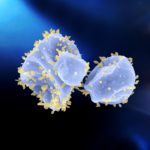Link to Pubmed [PMID] – 28265094
Proc. Natl. Acad. Sci. U.S.A. 2017 Mar;114(12):E2401-E2410
Viruses are the most abundant biological entities on earth and show remarkable diversity of genome sequences, replication and expression strategies, and virion structures. Evolutionary genomics of viruses revealed many unexpected connections but the general scenario(s) for the evolution of the virosphere remains a matter of intense debate among proponents of the cellular regression, escaped genes, and primordial virus world hypotheses. A comprehensive sequence and structure analysis of major virion proteins indicates that they evolved on about 20 independent occasions, and in some of these cases likely ancestors are identifiable among the proteins of cellular organisms. Virus genomes typically consist of distinct structural and replication modules that recombine frequently and can have different evolutionary trajectories. The present analysis suggests that, although the replication modules of at least some classes of viruses might descend from primordial selfish genetic elements, bona fide viruses evolved on multiple, independent occasions throughout the course of evolution by the recruitment of diverse host proteins that became major virion components.


